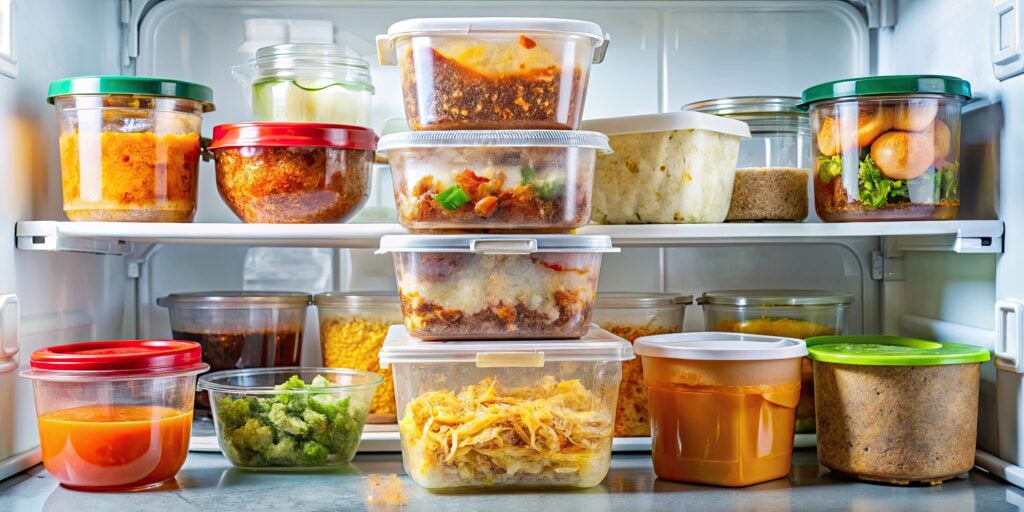Even the most organized kitchen can hide some habits that are secretly harming your health. Food dangers are not always obvious. This often happens in the middle of daily routines when preparing dinner, storing leftovers, or cleaning. Once you know what to look for, these small mistakes are easy to fix and can make a lasting difference in how safe your food actually is.
1. Mixing Raw and Cooked Foods Without Realizing It
It is commonplace to prepare several ingredients at once and reuse the same tools without thinking twice. A board for meat becomes a board for vegetables, or a knife cuts through raw chicken then slices bread. It may feel efficient, but this habit allows bacteria to move from one food to another, thereby increasing the risk of food contamination.
This is where the danger of cross contamination arises. Raw meat and seafood can carry biological hazards to the food that are easily transferred to food products that will not be cooked again. The solution is simple: use separate boards and equipment, wash them thoroughly with warm soapy water, and dry them completely before using them again. It only takes a moment but helps prevent food poisoning and other foodborne illnesses.
Even small adjustments, like using one cutting board for groceries and another for proteins, can make your kitchen feel safer. Once you start paying attention, it will be easy for you to handle ingredients with more care and confidence, as a trained food handler would.
2. Storing Food at Unsafe Temperatures
Temperature control is one of the most overlooked parts of food safety. Many people keep their refrigerator too warm or leave cooked food out longer than they realize. These small deviations pose safety risks that can lead to food contamination.
Keep your refrigerator at or below 40°F and your freezer at 0°F. When storing leftovers, refrigerate them within two hours of cooking and place them in a shallow container so the temperature drops evenly. If you need to thaw frozen food, do so in the refrigerator, not on the counter to prevent pesticide residue and bacteria from growing.
It also helps to store raw meat on the bottom shelf to prevent drips onto other foods. Use a meat thermometer to check cooking temperatures, especially for poultry and seafood. These small details help maintain food safety standards and protect freshness and taste.
Cutting boards, sponges, and towels may look clean, but they often contain more bacteria than you think. Sponges, in particular, trap moisture and become a breeding ground for germs. Wiping countertops or equipment with the same sponge spreads contamination rather than removing it, and sometimes even transfers foreign objects or physical contaminants into the food.
Change the sponge frequently or clean with hot water. Once the cutting board has deep grooves, it’s time to make a new one. These small cracks store residue that is difficult to remove completely. Plastic boards are easy to replace, while wooden boards need to be scrubbed regularly and dried thoroughly. Avoid using damaged equipment, because it can harbor bacteria and make cleaning less effective.
Clean your kitchen surfaces with hot, soapy water, then use a disinfectant after handling raw foods. Paying attention to hazard identification and hazard control helps keep your kitchen truly clean, not just neat.
4. Skipping hand washing between tasks
Your hands come into contact more often than you realize when cooking—ingredients, utensils, cupboards, and even your phone. Each touch transfers small amounts of bacteria that can easily get into your food, especially if good hygiene practices are not followed.
Washing your hands regularly may sound simple, but it is often forgotten when things are busy. Use warm water and soap for at least twenty seconds, especially after handling raw meat or seafood. Change towels frequently, as damp towels can harbor bacteria and undo your efforts without you realizing it.
Focusing on personal hygiene reduces the spread of viruses such as Hepatitis A, which can contaminate food through unwashed hands. If you treat hand washing as part of the cooking process, it becomes automatic. Clean hands protect you, your food, and everyone you cook for, supporting a stronger food safety culture at home.
5. Misjudging Food Leftovers and Expiration Dates


Leftover food is easy to get, but storing it for too long or storing it carelessly will increase the risk of foodborne illness. Dishes made with mayonnaise or dairy products, such as egg salad sandwiches, can spoil faster than you think if left out for a short time. Food can look and smell good even though it is no longer safe to eat. Bacteria don’t always show warning signs, which is why time limits are important.
Eat refrigerated leftovers within three to four days. Label the container with the date so you don’t lose track. When reheating, make sure the food reaches a temperature of at least 165°F to keep it hot. Microwave ovens can heat unevenly, so stir or rotate food to ensure even cooking. Just reheating until warm is not enough to remove bacteria.
Also pay attention to the expiration date. This is not intended to produce waste but to help you stay safe. ‘Use by’ and ‘best before’ dates are there to guide you, not to be ignored. Following it will protect your health and the quality of your food.
Final Thoughts
Safe cooking doesn’t require complicated rules. It depends on awareness and consistency. If you handle food carefully, keep equipment clean, and store ingredients properly, you build habits that protect you every day.
Each wise choice supports food safety standards and creates a cleaner, healthier and more caring kitchen. A strong food safety culture starts at home – where every meal reflects care and confidence.
–>
Reader Interaction
News
Berita
News Flash
Blog
Technology
Sports
Sport
Football
Tips
Finance
Berita Terkini
Berita Terbaru
Berita Kekinian
News
Berita Terkini
Olahraga
Pasang Internet Myrepublic
Jasa Import China
Jasa Import Door to Door